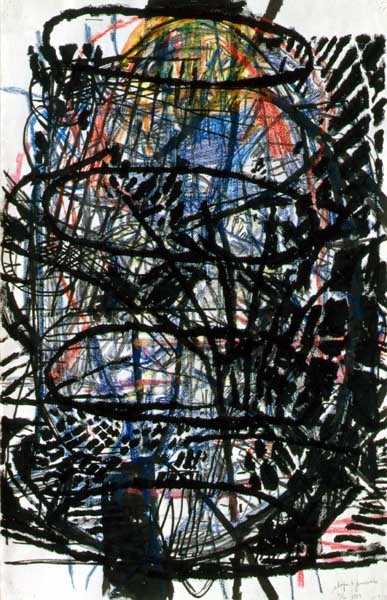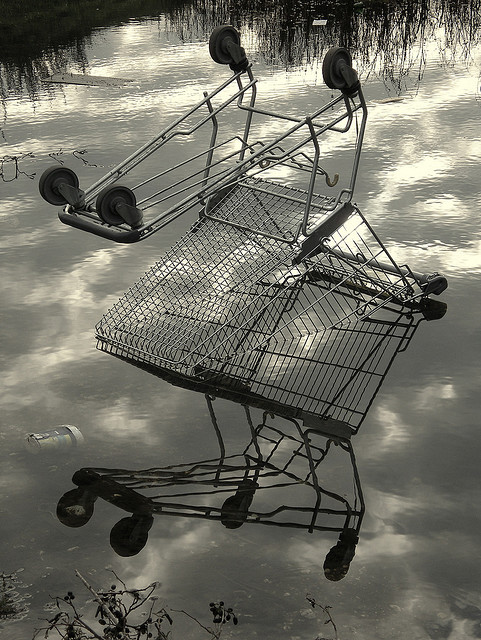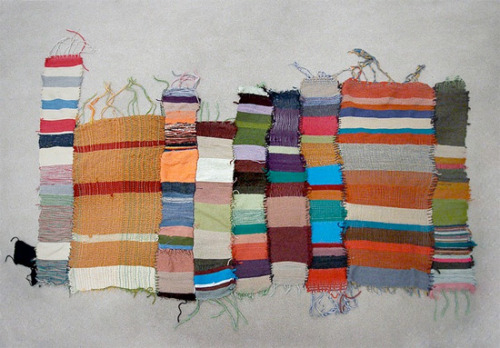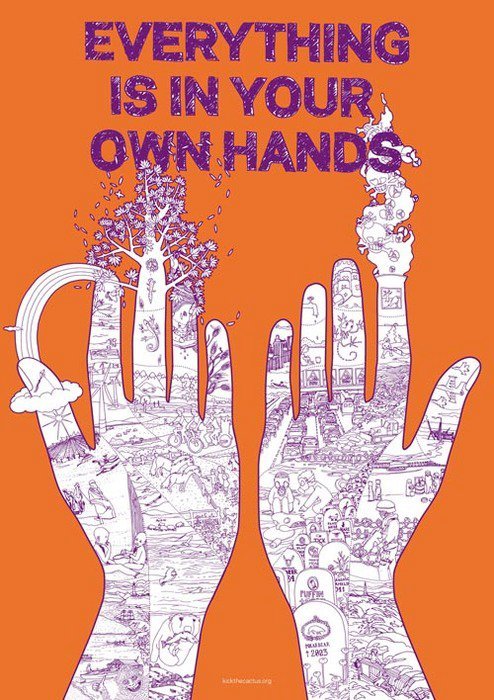Continued from Part One:
It was curious to find both Thursday night's GoMA Talks panel, in a cultural setting, and Friday/Saturday's seminar in a business context, focused so heavily on technology, media, trends, challenges and opportunities. I liked the symmetry of it... and both curiously added considerably to my understanding and receptivity to think more carefully about it.
Tonight over at tumblr I pondered the last few days... what I've been thinking about ... including this book from the library ... and Im reminded how extraordinary a time it is for the sphere of the mind.
 |
I'll maybe add another post on a few bits from the Ferran Adria book which I have relished reading about - my budget doesn't typically run to such restaurants - nor have i been drawn to the fashion for this food... but I'm finding the story of his journey utterly fascinating... especially the parts about his studio... and a time when he moved into a sculptor's studio over a summer to collaborate and bounce off another set of ideas!
Cross-pollination at its best - any chefs available for next summer at my studio?
 |
| Ferran Adria |
Cross-pollination at its best - any chefs available for next summer at my studio?
At Tumblr I read something about the noosphere ... which got me thinking after a few days on the topic of www and such things...
Noosphere ( /ˈnoʊ.ɵsfɪər/; sometimes noösphere), according to the thought of Vladimir Vernadsky[1] and Teilhard de Chardin, denotes the "sphere of human thought".[2] The word is derived from the Greek νοῦς (nous "mind") + σφαῖρα (sphaira "sphere"), in lexical analogy to "atmosphere" and "biosphere".[3] Introduced by Pierre Teilhard de Chardin 1922 [4] in his Cosmogenesis".[5] Another possibility is the first use of the term by Édouard Le Roy, who together with Chardin was listening to lectures of Vladimir Vernadsky atSorbonne. 1936 Vernadsky accepted the idea of the Noosphere in a letter to Boris Leonidovich Lichkov (though, he states that the concept derives from Le Roy).
/ˈnoʊ.ɵsfɪər/; sometimes noösphere), according to the thought of Vladimir Vernadsky[1] and Teilhard de Chardin, denotes the "sphere of human thought".[2] The word is derived from the Greek νοῦς (nous "mind") + σφαῖρα (sphaira "sphere"), in lexical analogy to "atmosphere" and "biosphere".[3] Introduced by Pierre Teilhard de Chardin 1922 [4] in his Cosmogenesis".[5] Another possibility is the first use of the term by Édouard Le Roy, who together with Chardin was listening to lectures of Vladimir Vernadsky atSorbonne. 1936 Vernadsky accepted the idea of the Noosphere in a letter to Boris Leonidovich Lichkov (though, he states that the concept derives from Le Roy).
In the original theory of Vernadsky, the noosphere is the third in a succession of phases of development of the Earth, after thegeosphere (inanimate matter) and the biosphere (biological life). Just as the emergence of life fundamentally transformed the geosphere, the emergence of human cognition fundamentally transforms the biosphere. In contrast to the conceptions of the Gaia theorists, or the promoters of cyberspace, Vernadsky's noosphere emerges at the point where humankind, through the mastery of nuclear processes, begins to create resources through the transmutation of elements. It is also currently being researched as part of the Princeton Global Consciousness Project.[6]
I'm not well-versed in this concept at all... but I do find it interesting to ponder. This is excerpted from Wiki...which as you know is not necessarily reliable ... however in this case I think it at least introduces leading ideas around this concept.
Teilhard de Chardin is often called the patron saint of the Internet - he was one who introduced the idea of the 'noosphere' into his writing 'Cosmogenesis' - he was a French philospher and Jesuit Priest (1881-1955)
...more on Noosphere from Wiki:
History of concept
For Teilhard, the noosphere emerges through and is constituted by the interaction of human minds. The noosphere has grown in step with the organization of the human mass in relation to itself as it populates the earth. As mankind organizes itself in more complexsocial networks, the higher the noosphere will grow in awareness. This concept is an extension of Teilhard's Law of Complexity/Consciousness, the law describing the nature of evolution in the universe. Teilhard argued the noosphere is growing towards an even greater integration and unification, culminating in the Omega Point, which he saw as the goal of history. The goal of history, then, is an apex of thought/consciousness.
One of the original aspects of the noosphere concept deals with evolution. Henri Bergson, with his L'évolution créatrice (1907), was one of the first to propose evolution is 'creative' and cannot necessarily be explained solely by Darwinian natural selection. L'évolution créatrice is upheld, according to Bergson, by a constant vital force which animates life and fundamentally connects mind and body, an idea opposing the dualism of René Descartes. In 1923, C. Lloyd Morgan took this work further, elaborating on an 'emergent evolution' which could explain increasing complexity (including the evolution of mind). Morgan found many of the most interesting changes in living things have been largely discontinuous with past evolution, and therefore did not necessarily take place through a gradual process of natural selection. Rather, evolution experiences jumps in complexity (such as the emergence of a self-reflective universe, or noosphere). Finally, the complexification of human cultures, particularly language, facilitated a quickening of evolution in which cultural evolution occurs more rapidly than biological evolution. Recent understanding of human ecosystems and of human impact on the biosphere have led to a link between the notion of sustainability with the "co-evolution" [Norgaard, 1994] and harmonization of cultural and biological evolution.
The resulting political system has been referred to as a noocracy.
American integral theorist Ken Wilber deals with this third evolution of the noosphere. In his work, Sex, Ecology, Spirituality (1995), he builds many of his arguments on the emergence of the noosphere and the continued emergence of further evolutionary structures.
The term Noöcene epoch refers to "how we manage and adapt to the immense amount of knowledge we’ve created." [1]
The noosphere concept of 'unification' was elaborated in popular science fiction by Julian May in the Galactic Milieu Series.
 |
Terry Winters - shape and pressure 1999 |
I do think its useful to think about using the internet in multi-
dimensional ways ... business for me has to be aligned with
other layers of possibility ... and then it becomes more animated,
worthwhile, motivating ... even inspiring.
What do you think?
 |
ontheborderland: The day had felt inauspicious, but now it’s just squandered.—OTB (Image by derpunk
|
Ive put all this material over two posts to propose the idea of all things being connected ... this time being ripe for the weaving together of business and culture, Science and Art, Environmental sustainability with everything ... head, heart and hands!
Heres to all the weaving together, shaping and transforming that we need to get on with... I do think were in for a very busy time somehow!
 |
 |
| missy brown |


2 comments:
I can't help but, agree that we are on the verge of something wonderful! Thank you for the interesting articles. THere is a relationship between food and sculpture. AFterall, it is all raw materials right? Anyway, continue on lady! It is truly interesting.
Can you imagine Mary... that must have been quite a collaboration... chef and sculptor! Raw materials... yes... and certain similar elements for sure!
Key word for the week: EXPONENTIAL
its hard to see where ever increasing change puts us... its many things and a little frightening in ways... yet so much to be celebrated...
Glad you trawled through this... It was so long this morning I got up and did the fun book post as I thought everyone would go to sleep reading this !
Maybe I should make a congrats certificate ... "I read part ! & 2 and Im still awake!"
have a wonderful week ... Mexican photos were great Mary...
S
Post a Comment